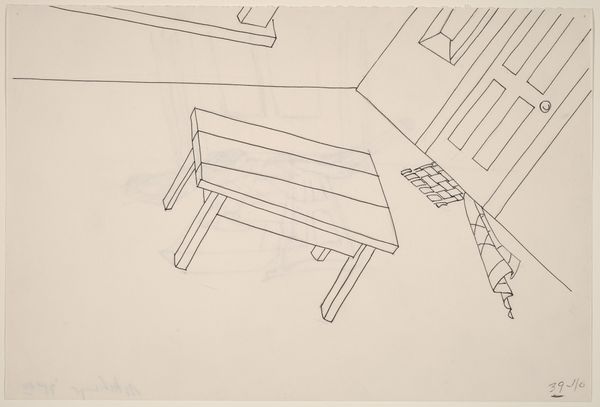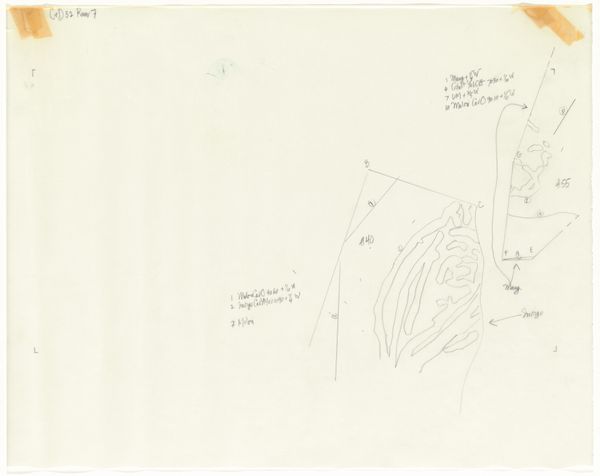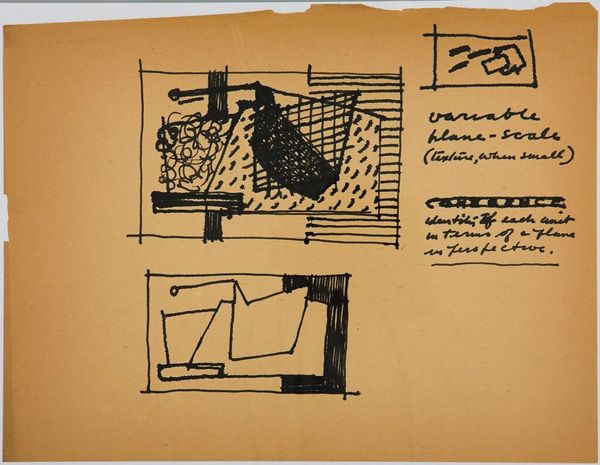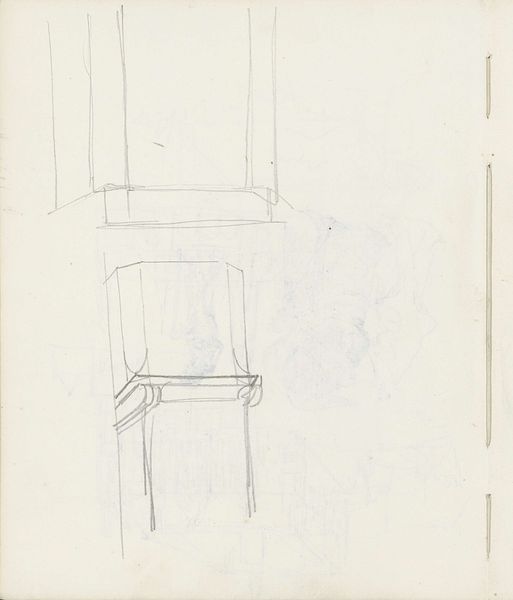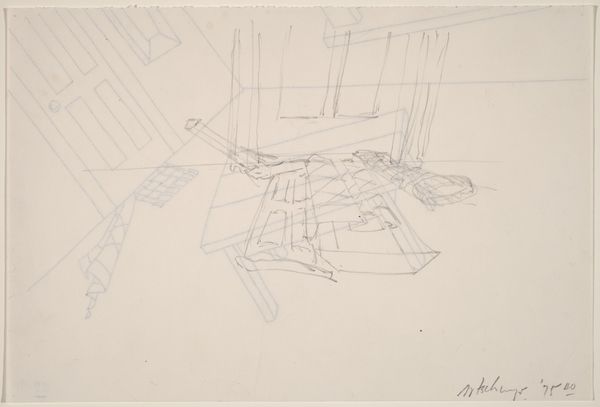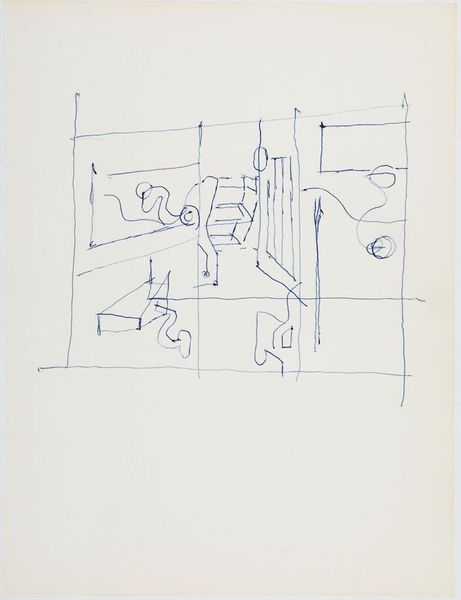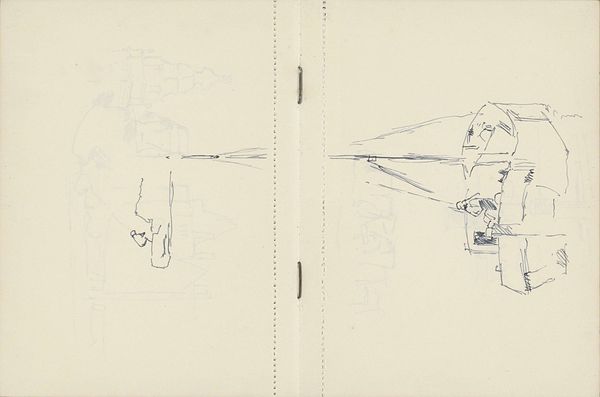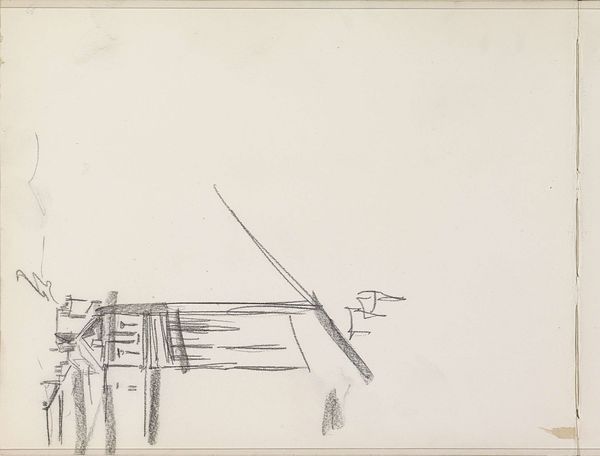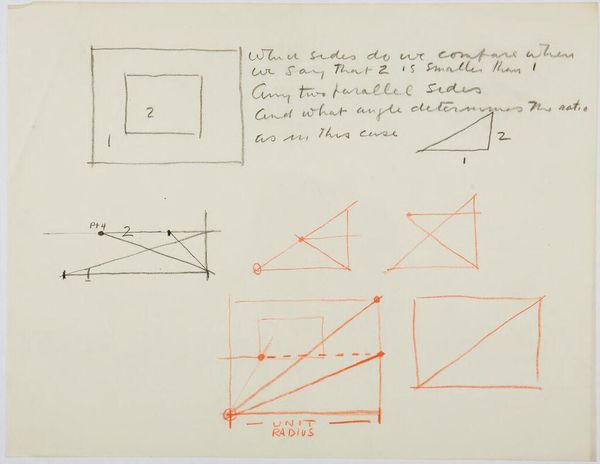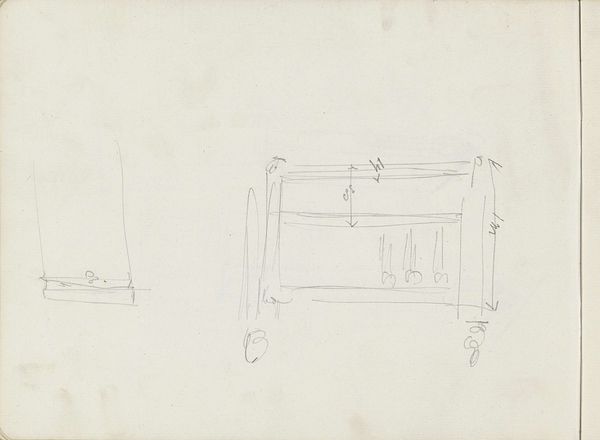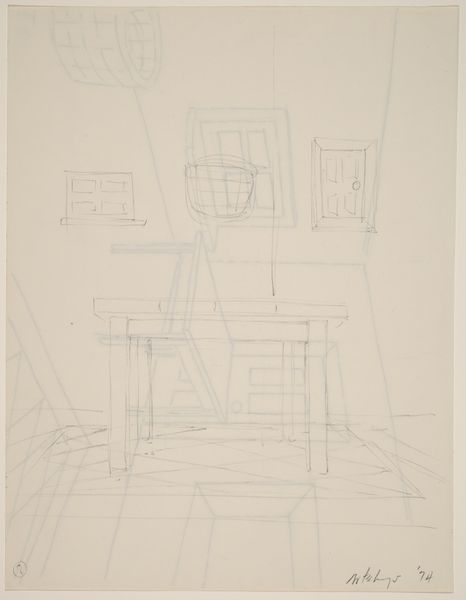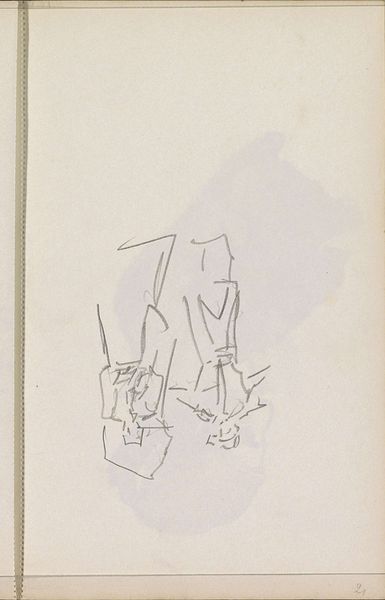
Copyright: CC0 1.0
Curator: This is a sheet from a documentation box by Wolf Vostell. It's a stark black and white sketch from 1979 of an environment installation titled "Deutsches Zimmer," or "German Room." Editor: My first thought? Claustrophobia. It's so sparse, so geometrical, and somehow oppressive despite its simplicity. It feels like a diagram for a prison cell designed by an architect with a serious grudge. Curator: The starkness is deliberate. Vostell often used concrete as a symbolic material to represent the weight of history, especially in post-war Germany. Notice how he labels the elements "Beton Tisch," "Beton Stuhl"—concrete table, concrete chair. Editor: Right, it's the "banality of the concrete" taken to its logical, soul-crushing extreme! The empty half of the sheet just amplifies this feeling. It’s like a room half-erased, or a potential for life deliberately left blank. Curator: Precisely. This piece serves as a potent symbol of cultural amnesia and the artist's reflection on a past that haunts the present, inviting us to remember and confront. Editor: Absolutely. It makes you consider the weight of seemingly mundane objects, transforming them into powerful symbols of historical trauma. I can't look at a table the same way again.
Comments
No comments
Be the first to comment and join the conversation on the ultimate creative platform.
